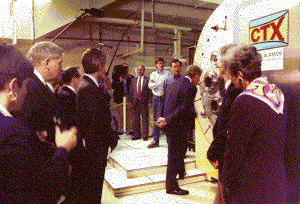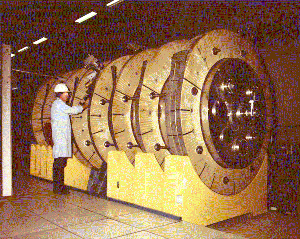
In Plasma Source Ion Implantation, an object to be implanted is placed in a glow discharge plasma containing the desired ionic species, and then pulsed to a high negative voltage (we use up to 100 kV). The negative voltage pulse accelerates positive ions out of the plasma an implants them into a thin layer (sub-micron) of the object's surface. The big advantage of this over a conventional beamline implantation is that the implant is done over the entire surface simultaneously, so high total implant currents can be used, greatly reducing the time required to treat large objects. In addition, you can treat any object you can stuff into your vacuum chamber (we have a 15'-long, 5'-diameter chamber), since it is not necessary to manipulate the object or beam. Disadvantages include lower implant energies than are possible in beamline implanters, and high secondary electron currents which waste most (90%) of the power, heat the chamber walls, and produce x-rays which must be shielded at higher energies.
The 5'-diameter, 15'-length CTX vacuum chamber

An
array of 1000 piston-surrogates being coated with hard, low-friction
diamond-like carbon (DLC).
Download a high resolution
(5.5 MB) version of this photo.
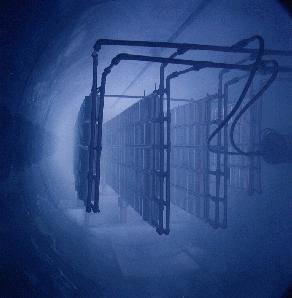
An aluminum cylinder is implanted with nitrogen inside the CTX vacuum chamber
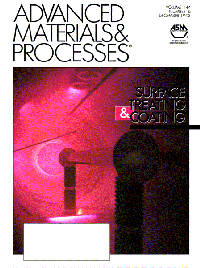
The LANL high-voltage modulator produces 100kV, 50A peak current pulses of 20us duration at 2kHz.

A particle-in-cell supercomputer simulation of implantation of a Pierce punch. Electrons are red, ions are yellow.
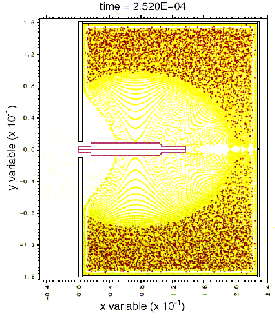
President Clinton examines the CTX Plasma Source Ion Implantation facility
